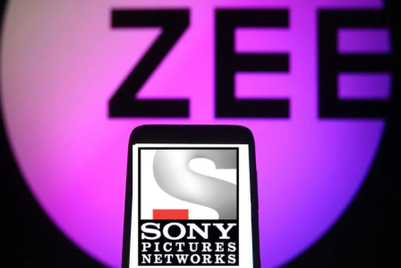“Failure isn’t fatal, but failure to change might be.” —John Wooden, legendary UCLA basketball coach, who won 10 national championships in 12 seasons because of his ability to constantly adapt to new players, new rivals, and new styles of play.
We are experiencing a massive shift from markets to networks, and this is bringing with it a new business orientation that marketers must face if they are to remain important players in the years ahead.
What’s the difference between markets and networks? Markets are impersonal, episodic, and the exchange between the seller (brand) and the buyer (consumer) is carried out at arm's length. All that matters is how much the seller is asking, and how much the buyer is offering. A network, by contrast, is based upon more personalized and enduring relationships between buyer and seller, which ties them together by more than just price.
Today, technology has changed almost every aspect of our personal lives. Technology is moving at a faster rate than we could ever imagine, and micro-enterprises and startups, are using these technologies to help catapult them into new markets with new growth opportunities. We are all ‘wired’ in, and thanks to the Internet, almost anything you desire can be delivered to your door in a matter of days. Over the past twenty years or so, given the advances in communication and information technology, the business world has been revolutionized with the face and pace of business changing almost beyond recognition. Almost 80% of companies believe that technology plays an essential part in their plans for growth, helping businesses to up their game and reaching beyond traditional markets to larger audiences through networks. But what are they doing about it?
The Internet has changed the marketing game
With the intense competition that now exists globally, marketers are constantly searching for new technologies to increase productivity, allowing them to reduce the costs of producing their goods and services so they can sell them cheaper than their competitors, win over consumers and secure sufficient profit for their investors.
The Internet has also changed the marketing game by flattening the playing field. Now millions of marketers (sellers) and consumers (buyers) can connect and communicate with each other in virtual space. The Internet is replacing the middlemen, the wholesalers, the retailers, and the mark-ups on transaction costs across the complete supply chain. Think of it as a distributed network of millions upon millions of suppliers and users.
The relationship between marketers (sellers) and consumers (buyers) is being replaced by a relationship that embodies collaboration—people that have grown up in the digital age have different expectations of traditional businesses and institutions thanks to the transparency and empowerment of the Internet. The old ways of doing things are changing as we adopt a more open approach that includes sharing ideas, ownership, and power.
The number of enterprises who are digitally engaging their customers through networks, are using social media, online advertising or email marketing are rising daily and are doing so with great success. The same technology that has made the customer faceless also offers us more information about them than we've ever had access to. Computer cookies give us feedback on the important things about our customers – what interests them, disinterests them, whether it is price, size or colour that stops them from making that purchase.
This type of information allows a more level playing field for all marketers, big and small. Where customer insight used to be the privilege of those with large marketing budgets, customer data mining is inexpensive and readily available to SMEs and startups. This means the technical savvy enterprise will be able to engage customers through digital networks and tailor content to audiences both home and away.
The Internet has radically reduced market entry costs in generating and disseminating information, giving rise to such companies as Google, Amazon, Netflix, Alibaba, Facebook and others who had the potential to greatly reduce the costs of products and brands. This too, has encouraged millions of small and medium sized marketers to challenge and the giant marketing companies that have been at the centre of traditional marketing.
Many businesses have succeeded in using the Internet as their primary, or sometimes only, medium. This has been accompanied by the tumbling costs of marketing. The very nature of television, radio, newspapers, and magazines made marketing costs high and this favoured the giant marketing firms who could afford these media buys with substantial funds to market their products and services. For companies thinking in terms of “networks” not “markets”, networks allows most modern enterprises to lower their overheads, staffing and office space, enabling them equal opportunities in emerging and evolving markets.
Networks are competing with markets in industry after industry
Networks exist for sharing, selling and buying videos, music, content, travel tips, health and medical information, education, consumer goods and more. Yet, over the past decade, millions of consumers have become prosumers, producing, selling and sharing their own music, videos, news and knowledge, products and intellectual property, sometimes for free, shrinking revenues in the music, newspaper and book-publishing industries.
If you remain a skeptic as regards networks competing with markets, think about this. Encyclopedia companies like Britannica, Encarta and Columbia use to hire academics to write scholarly articles for their extensive hardcover books which contained much of the world’s knowledge. When Wikipedia entered the market no one could believe that thousands of professionals and amateurs from the world over would collaborate with each other on virtually any and every topic possible without pay. Inconceivable. Incredible. Unthinkable. Yet today, Wikipedia is almost thirty times the size of Encyclopedia Britannica and keeps things more up-to-date with contributions from these collaborators. Wikipedia is also the eighth most visited site on the Internet.
One new player that brings another dimension to the marketplace is Etsy (etsy.com). Etsy is a network where people around the world connect to buy unique goods directly from other people around the world. Their mission is “to re-imagine commerce in ways that build a more fulfilling and lasting world”. Simply put, their positioning is the personalization of relationships between sellers and buyers. Their website engages their users with chat rooms, helps to coordinate craft shows, conducts seminars, allows for interaction, collaboration and the exchange of ideas, and builds social bonds between sellers and buyers.
The human-to-human relationship between the person who makes the product and the person who buys the product is the core essence of what Etsy is all about. In 2011, Etsy sales topped $500 million. They are amongst hundreds of global Internet companies bringing consumers and producers together in networks – virtual marketing spaces — and helping to democratize marketing and advertising costs across the globe. With Etsy, small craft producers have access to global markets with nearly zero cost of entry giving them an edge they never had before and an opportunity to compete in this new networked economy.
The Internet is potentially the biggest business opportunity in history, challenging and changing the way we do business with extraordinary and wide-ranging implications, affecting everyone on the planet. IDC, a global provider of market intelligence and research predicts that this massive shift from markets to networks will generate nearly US$9 trillion in annual sales by 2020. No doubt, companies who embrace “network” thinking will be the ones whose brands will be global household names in 2020 and beyond.
In today’s global marketplace, companies of all sizes now have the potential to move the needle on a global scale and to be leaders in their industry as “networks” are helping to create equal marketing opportunities beyond the big budget requirements that were needed in the past. The disruptive impact of digital technologies has created a seismic shift from “markets” to “networks”, from big companies to small companies who have more agility to change faster, and from mass markets to network niches.
The old “markets” model favoured scale—the bigger the better. The new “networks” model shows that biggest is not always the best. Leadership is no longer about scale and dominance, but about purpose and relevance, about creating value through innovation and relationships, setting the bar higher and redefining customer expectations.
(Mike Fromowitz is partner and chief creative officer of Ethnicity Multicultural Marketing + Advertising Inc.)
(This article first appeared on CampaignAsia.com)









.jpg&h=334&w=500&q=100&v=20250320&c=1)
.jpg&h=334&w=500&q=100&v=20250320&c=1)


.jpg&h=334&w=500&q=100&v=20250320&c=1)

.jpg&h=334&w=500&q=100&v=20250320&c=1)

.jpg&h=334&w=500&q=100&v=20250320&c=1)









